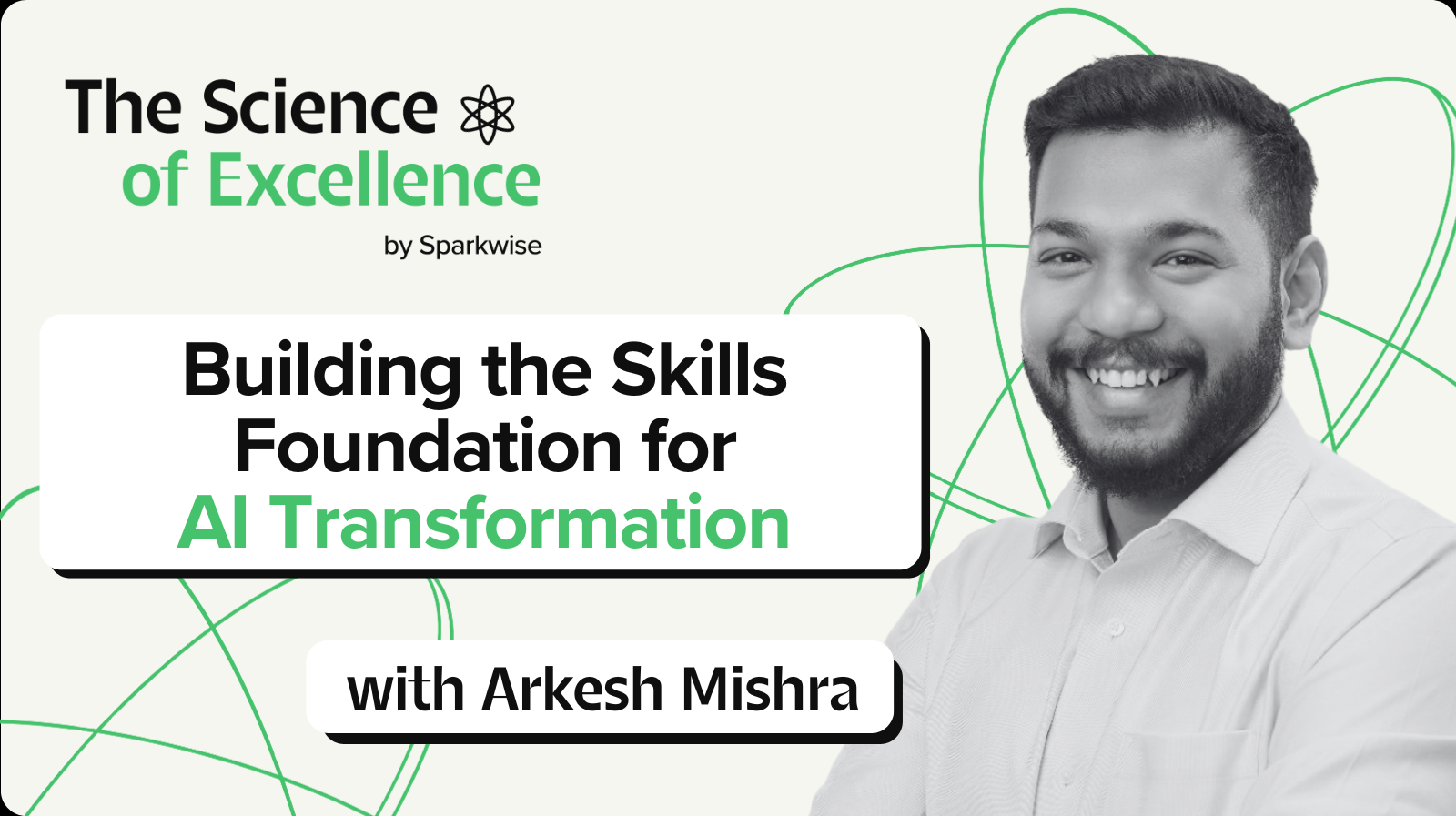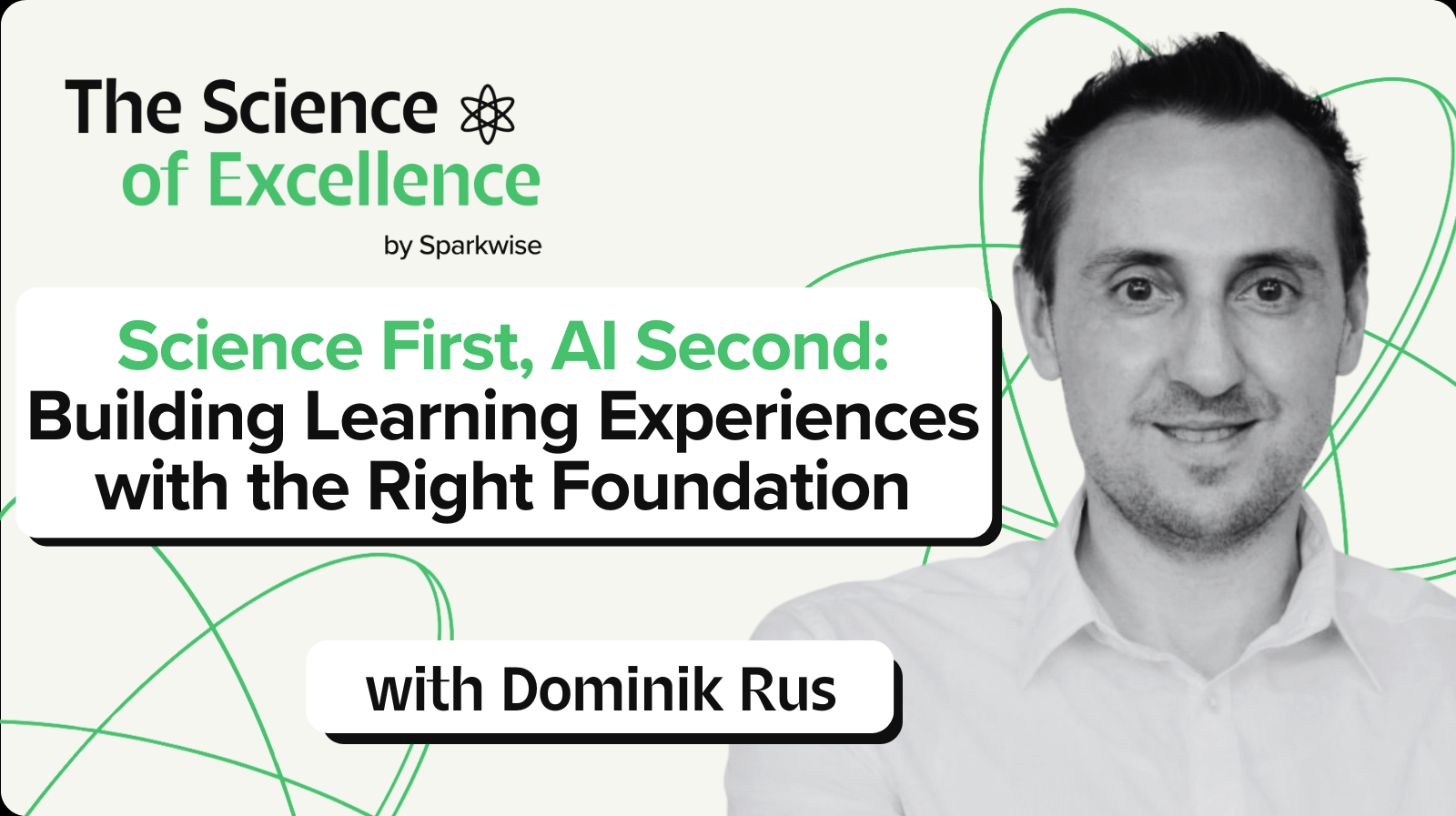In this episode of The Science of Excellence, I sat down with Caro Paduch, Global People Programs Lead at GlobalLogic, where she specializes in career growth and talent strategy. Caro brings a global perspective to her work helping leaders navigate complexity across cultures and functions.
Our conversation explored why collaborative leadership has become essential in today's rapidly changing world. We discussed how leaders must shift from being controllers to connectors, the role of AI in amplifying—not replacing—human collaboration, and the practical challenges of building trust across different leadership styles and cultures.
These 4 insights stood out from our conversation:
- Be a Connector, Not a Controller
- Lead with Curiosity and Self-Awareness
- Collaborate to Unlock AI’s Potential
- Create Communities Around Shared Experiences
1. Be a Connector, Not a Controller
In Caro's Words: "I think being a collaborative leader is about being a connector and not a controller. It's about bringing people together to the table solving problems together. The problems that we are facing in today's world are so complex that it's not just about one area of the company that can solve them, or one group that can solve them. We need people from the business, people from marketing, people from the HR world, people from the finance team to all come together to figure out solutions."
Today's business problems don't respect organizational boundaries. A challenge that looks like an HR issue requires finance input on budget constraints, marketing perspective on employer brand impact, and business unit insights on operational realities. Leaders who try to solve complex problems within their silos inevitably create solutions that break down at the intersection points.
The connector leader's job is identifying who needs to be in the room and ensuring every relevant voice has a seat. This means getting comfortable convening conversations where you're not the expert on everything being discussed.
2. Lead with Curiosity and Self-Awareness
In Caro's Words: "The second one is curiosity, and it's this curiosity to learn. I don't know it all. I don't have all the answers. I'm not gonna be able to solve this by myself. I need you, I need you, Vince, to come up with some ideas... I need to know what I'm good at and what I can bring to the table and what I'm not good at and what I cannot bring to the table. And sometimes for us leaders, it is difficult to be so self-aware to actually know what you need to get some help on."
The traditional leadership model celebrated the hero who had all the answers. That model is obsolete. Global problems require understanding how people in India, Japan, and Latin America think differently about the same challenge. No single leader possesses that range of perspective.
Self-awareness becomes the foundational skill. You need to know your blind spots before you can invite others to fill them. This requires dropping the performance of having everything figured out. Leaders who admit what they don't know create space for others to contribute what they do.
3. Collaborate to Unlock AI’s Potential
In Caro’s Words: "AI can help us. Like I was actually preparing for this chat with you, asking ChatGPT a number of questions. How would you say this? How would you say that? It helps you become superhuman in a way, but it can only say what it learns from the past. For us to truly be innovative and to solve some of these extremely big problems that we are facing, we actually need creative thinking. And for us to create creative thinking, we need to collaborate with others, and we need to build that trust that can only be built through connection and collaboration."
AI can make individuals more productive, but it can't drive organizational innovation alone. Companies are investing heavily in AI but not seeing returns because they aren't bringing the right people together to figure out how AI should actually integrate with work.
When departments operate in silos, AI becomes another failed initiative rather than a transformation driver. Creative solutions to complex problems require both AI capabilities and human collaboration, and you can't substitute one for the other.
4. Create Communities Around Shared Experiences
In Caro's Words: "One of the things that you start to hear when you're talking to leaders, particularly with the more senior leaders, it's very lonely at the top. When you start to help them connect that, hey, yeah, it may be lonely, but there's so many other lonely leaders out there that you can talk to. And then you have a community. A lot of the learning programs that you see about leadership focus on creating cohorts so that people start seeing that they're not alone in this and they could actually have someone they can share some of the bigger problems that they're trying to solve."
Senior leaders face a particular isolation. They can't show vulnerability to their teams, they're competing with peers, and the problems they face feel unique to their context. This isolation makes collaboration harder precisely when it's most needed.
We need to create spaces where leaders realize others are wrestling with similar challenges. A startup-minded leader struggling to navigate corporate bureaucracy can learn from a corporate veteran who needs to move faster. But this only works if they trust each other enough to admit what they don't know. Building that trust at senior levels is harder than with junior employees and takes more time, which is the exact resource these leaders lack.
Until next time,
Vince


.png)








.png)
.png)









.png)












.png)